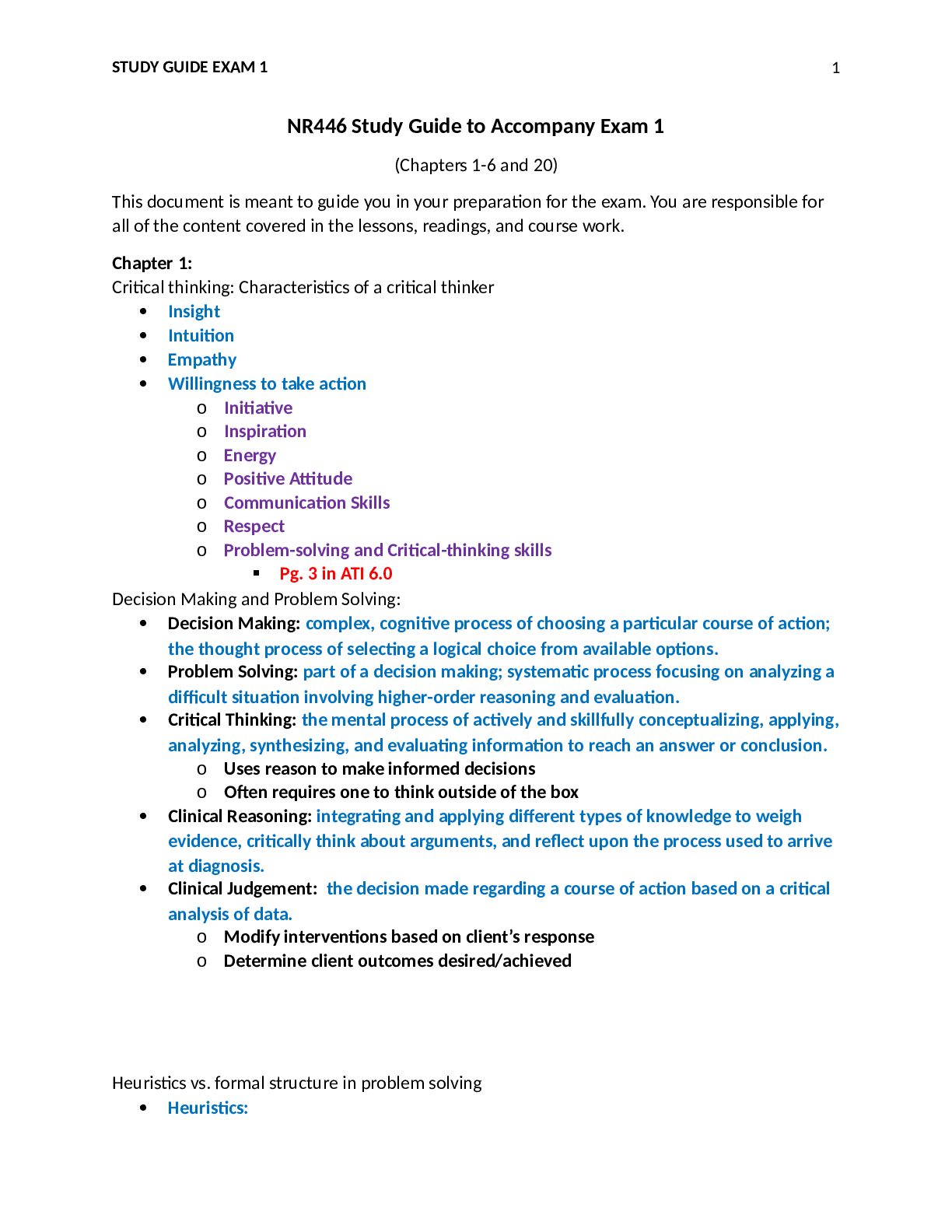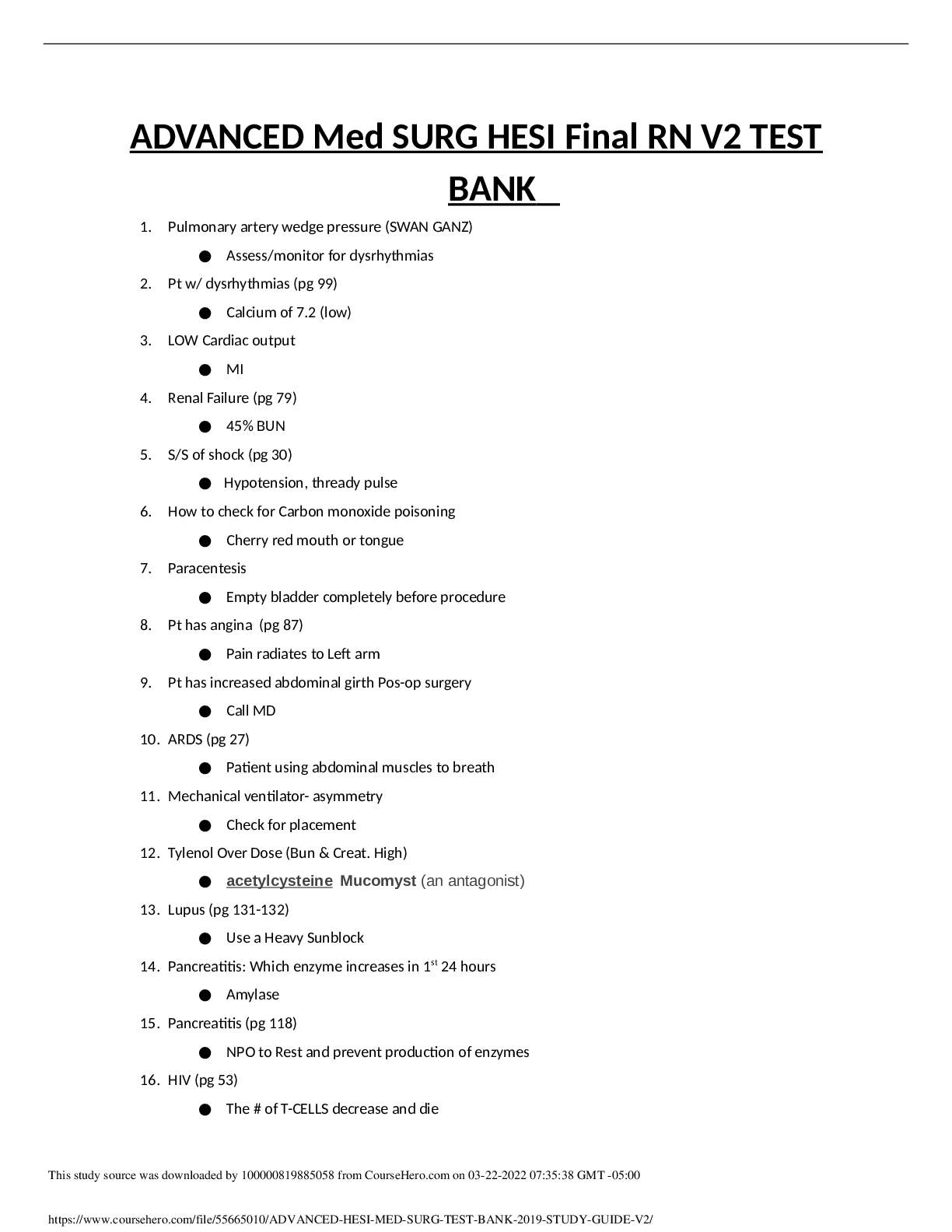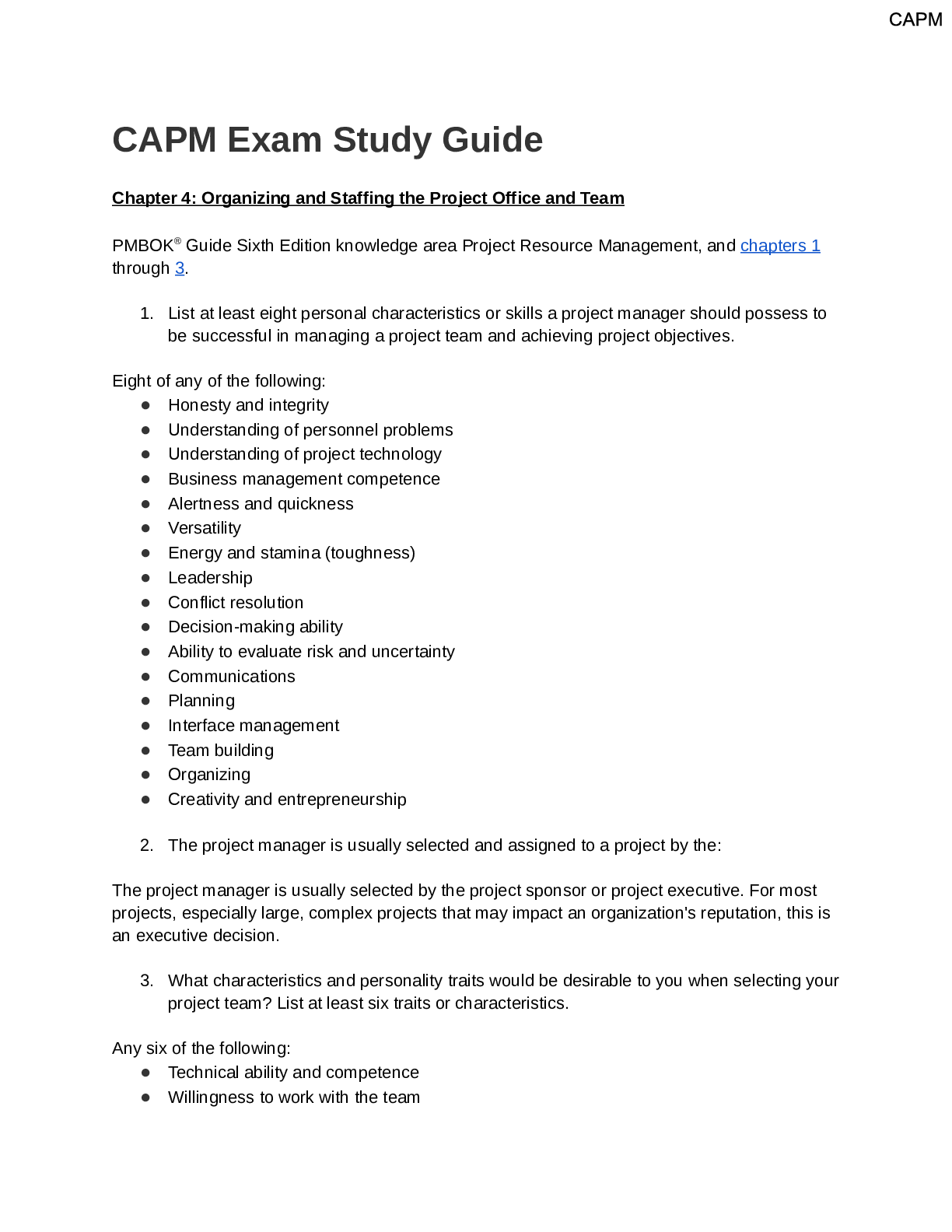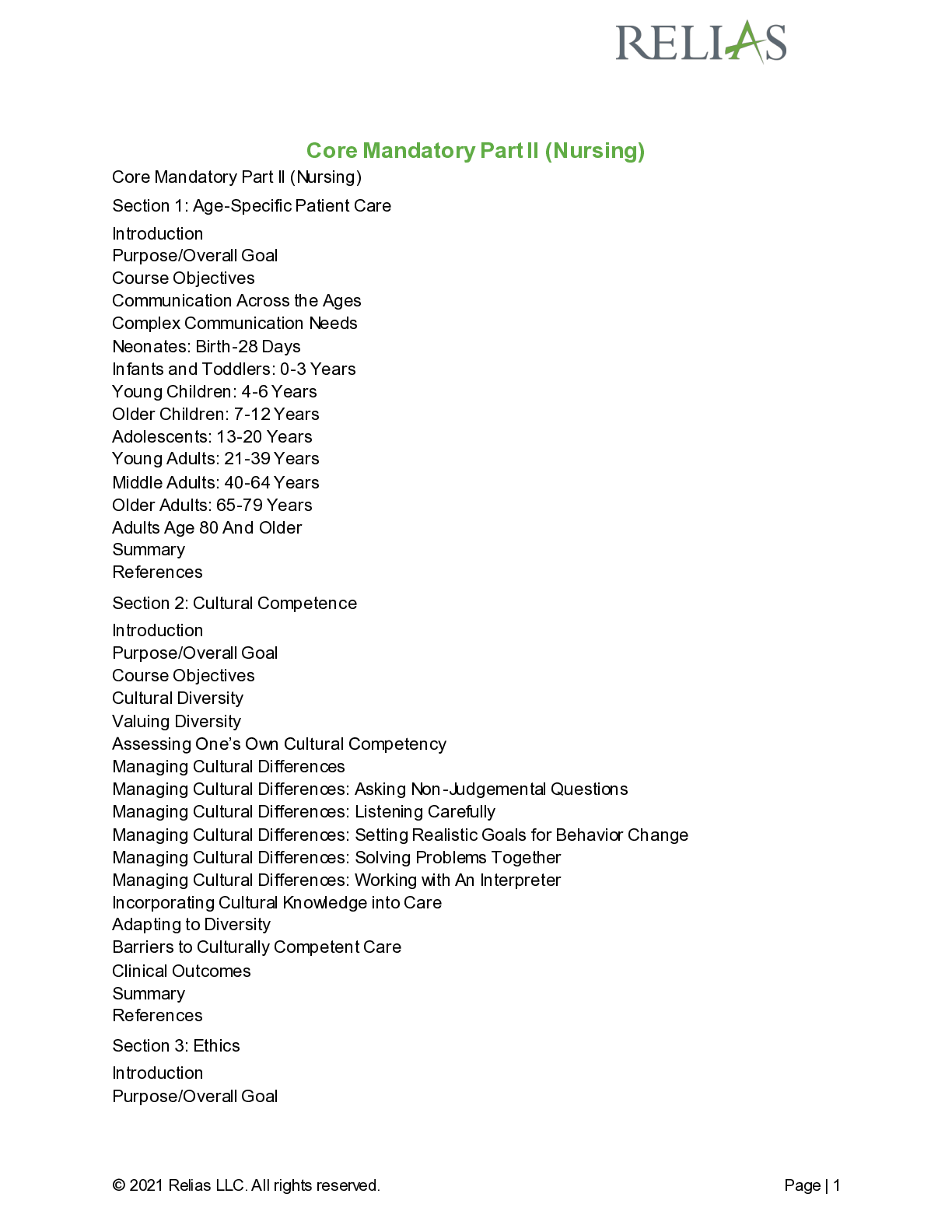*NURSING > STUDY GUIDE > NR446 Study Guide to Accompany Exam 1 (All)
NR446 Study Guide to Accompany Exam 1
Document Content and Description Below
Critical thinking: Characteristics of a critical thinker • Insight • Intuition • Empathy • Willingness to take action o Initiative o Inspiration o Energy o Positive Attitude o Communi... cation Skills o Respect o Problem-solving and Critical-thinking skills ▪ Pg. 3 in ATI 6.0 Decision Making and Problem Solving: • Decision Making: complex, cognitive process of choosing a particular course of action; the thought process of selecting a logical choice from available options. • Problem Solving: part of a decision making; systematic process focusing on analyzing a difficult situation involving higher-order reasoning and evaluation. • Critical Thinking: the mental process of actively and skillfully conceptualizing, applying, analyzing, synthesizing, and evaluating information to reach an answer or conclusion. o Uses reason to make informed decisions o Often requires one to think outside of the box • Clinical Reasoning: integrating and applying different types of knowledge to weigh evidence, critically think about arguments, and reflect upon the process used to arrive at diagnosis. • Clinical Judgement: the decision made regarding a course of action based on a critical analysis of data. o Modify interventions based on client’s response o Determine client outcomes desired/achieved Heuristics vs. formal structure in problem solving • Heuristics: o Shortcut mental strategies that help simplify information o Discrete and often unconscious process for problem solving o Allows for quick problem solving based on experiences o Uses “trial and error” or “rule of thumb” ▪ A structured approach to problem solving and decision making increases clinical reasoning • Traditional (formal) structure in Problem Solving o Effective Model o Weaknesses ▪ Time is needed for proper implementation ▪ Lack of initial objective-setting step o Identify the problem o Gather data to identify the causes and consequences of the problem o Explore alternative solutions o Evaluate each alternative o Select appropriate solution ▪ Decision-making happens here o Implement Solution o Evaluate results Critical elements used in decision making (POSSIBLE SATA ON EXAM) • State a clear objective • Gather data carefully • Take the time necessary • Use an evidence-based approach • Generate many alternatives • Think Logically • Choose and act decisively [Show More]
Last updated: 2 years ago
Preview 1 out of 18 pages

Buy this document to get the full access instantly
Instant Download Access after purchase
Buy NowInstant download
We Accept:

Reviews( 0 )
$11.00
Can't find what you want? Try our AI powered Search
Document information
Connected school, study & course
About the document
Uploaded On
Aug 14, 2021
Number of pages
18
Written in
Additional information
This document has been written for:
Uploaded
Aug 14, 2021
Downloads
0
Views
40















